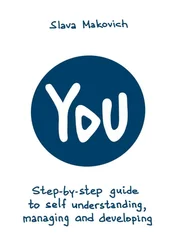This is not just an interesting question for academic types like me; it is a curious, even burning, question in many laypeople’s minds. Some heterosexual people, for example, wonder why gays and lesbians have to “go flaunting their sexualities” all over the place in gay pride festivities. Perhaps there is an implied homophobia to such statements from heterosexual people (i.e., they do not want to be exposed to a sexuality they don’t like or are uncomfortable with). Yet I also expect that some heterosexual people just truly wonder what all the fuss is about, because they, as heterosexual people, don’t have a parade announcing their sexuality.
Similarly, Dan Savage, an outspoken sex columnist (is there any other kind?), has questioned the need for asexual people to assert their identity, at least within a public sphere (Chevigny, Davenport, Pinder, & Tucker, 2011). He argues that it is clear why gays and lesbians, for example, need to assert their identity in a public sphere. Public announcements and displays of sexual identity are important so that sexual minorities, such as gay men, can claim the right to engage in, in his words, ahem, “cock sucking.” Well, what if you are asexual? If you are not engaging in potentially prohibited behavior (e.g., fellatio among men) and thus do not need public acceptance (or at least tolerance) of it, why go out and make public displays of your identity, or demonstrate in a parade or a public march? After all, no one cares that you are not having sex, and no one will put you in jail for not having sex. So, what is all the fuss about? Just stay at home when the next gay parade rolls around.
Dan Savage has a point here, and his argument goes some way in answering the above-mentioned query from some heterosexual people about why lesbians and gays go about “flaunting their sexualities” at gay pride parades: they need to achieve acceptance and recognition for potentially prohibited behaviors. Interestingly, this view—that public displays of identity are particularly important for gays and lesbians and perhaps less so for asexuals—is probably not lost, at least on some level, on many asexual people. So while some asexual people do march and assert their identities publicly (Childs, 2009, January 16), I expect that a large number of asexuals quietly go about their lives without ever signing on to a chat-line or a website devoted to asexual issues, let alone joining a march devoted to sexual minorities.
But let’s get back to Dan Savage’s main point. Although there is some sense in it, I also think it misses a more important, broader point: The relevance of having an identity (and being able to express it) goes beyond gaining acceptance for, and therefore access to, behavior that might otherwise be prohibited. It has to do with answering some basic questions about oneself (e.g., Who am I? How do I fit in with others? ). It also has to do with expressing oneself and seeking some level of acceptance from others for one’s existence (e.g., I exist, and I want the world to know and recognize that I exist ). Identity formation, including the sexual identity process that is part of the broader identity-formation process, is a fundamental aspect of human development (Lawler, 2008; Leary & Tangney, 2003; Mathews, Bok, & Rabins, 2009). Anyone who knows a teenager, or recalls his or her own teen years, understands how important and fundamental identity formation can be. Similarly, the fact that most societies, cultures, and religious groups have “coming of age” rites attests to the importance of identity formation in human development, particularly within the context of reproductive/sexual maturation. Thus identity issues, sexual and otherwise, are also relevant to asexual people.
Interestingly, identity formation is increasingly relevant to a group whose sexuality may not fit comfortably within either the sexual or the asexual realm. For example, a number of people have migrated to the AVEN website/community who identify themselves as “gray-a.” Thus, these individuals feel they fit somewhere on the spectrum between sexual and asexual. This fact also demonstrates the importance of identity formation and people’s need to find their place in the world. We all need a language to describe ourselves that reflects our commonalities with those who share our characteristics and our differences from those who don’t.
The sexual identity process in asexual people has not been studied extensively, at least not to the extent to which it has been studied in gays and lesbians. But processes similar to those that occur in gays and lesbians are also likely to occur in asexual people, given that there are some similar issues—namely, being a sexual minority in a heterosexual (and heterosexist) world (Scherrer, 2008).
Theorists have argued that there are a variety of stages to sexual identity formation in sexual minorities. One of the first stages is recognizing one’s own attractions. Later stages include testing and exploring one’s attractions, along with identifying/labeling oneself (e.g., as gay, bisexual, or lesbian). Final stages might potentially include making public disclosures and developing identity pride (Cass, 1979; Coleman, 1982; Floyd & Stein, 2002; Troiden, 1989). When someone is described as “coming out” (e.g., to one’s parents), this usually refers to public disclosures, or the formation of a public identity (Cass, 1996). For example, public disclosure is typically how most gay, lesbian, and bisexual people understand “coming out.” However, when identity theorists discuss sexual identity formation in sexual minorities, they usually refer to the whole process, and not just coming out. Thus, there is recognition of the complexity and the multiple facets or stages of identity formation. Identity theorists have also recently recognized that discrete steps or stages may not always capture the true phenomenology (i.e., the reality or lived experience) of the sexual identity process in sexual minorities. For example, the so-called stages may blend into one another, or the timing may be reversed for some people. Relatedly, there is a recent suggestion that gays and lesbians can often have different developmental experiences of sexual identity formation (Diamond, 2006; Rust, 1993). Thus, even while current theorists recognize the complexity of people’s coming-out experiences and the importance of considering various stages (as a heuristic or learning tool), there is probably a need to make the models even more complex. Damn those complex humans!
Despite the limitations, let’s assume that these theoretical stages of the sexual identity process have heuristic value. Let’s also assume that they are relevant, at least to some degree, to an asexual person in forging his or her sexual identity.
As mentioned, one of the stages of the identity process can be coming out, or the making of public disclosures. What makes a person come out sooner rather than later, or perhaps never come out at all? There are a variety of factors that have been associated with an early (versus a later) coming-out experience, including one’s age or, more accurately, the era into which one was born. Younger cohorts of gays and lesbians come out sooner than older cohorts, at least in Western society (Floyd & Bakeman, 2006). This trend may say something about the changing state of Western society, particularly the increasing degree of acceptance of sexual minorities relative to past eras.
My colleague Carolyn Hafer and I discovered that beliefs about the world are also important in the timing of coming out (Bogaert & Hafer, 2009). When gay men believe that the world is just—that people get what they deserve and deserve what they get (Lerner, 1980)—they are more likely to come out sooner, as opposed to those who don’t hold these beliefs. In contrast, gay men who believe that the world is unjust, relative to those who believe that the world is just, are more likely to stay in the closet until later in life (or not come out at all). [26] We are currently collecting data on the coming-out process in lesbians and bisexual women, and it will be interesting to see if we can replicate these findings in women. In our first study (Bogaert and Hafer, 2009), there was not a sufficiently large sample to test this issue in women.
We speculated that beliefs about the justice of the world are important in gay men’s coming-out experience because gay men are often the subjects of discrimination (Herek, 2000; Herek, 2002). Thus, believing that the world that awaits you is full of injustices, and that those injustices will be directed at you in the form of discrimination—sometimes an accurate perception—can make one shy away from making a grand entrance onto the world’s stage. There is a saying that “justice delayed is justice denied.” This research suggests a modified version of this maxim: “an entrance delayed is an injustice denied” (or so some gay people may perceive the situation).
Читать дальше












